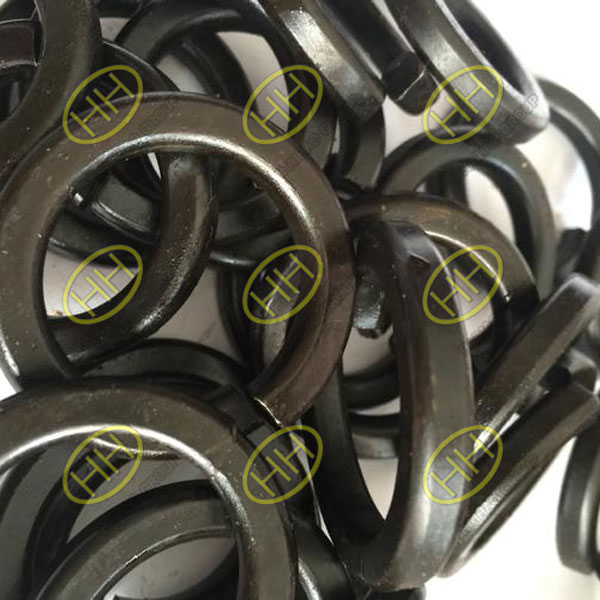The role of spring washers in bolt applications
Spring washers, also known as split lock washers, play a critical role in ensuring the stability and integrity of bolted connections. Here’s an in-depth look at their functions, benefits, and usage guidelines.
Functions of Spring Washers
Preventing Loosening:
Elastic Force: When a nut is tightened, the spring washer exerts an elastic force that pushes back against the nut. This force increases the friction between the nut and the bolt, making it less likely to loosen under vibration or dynamic loads.
Reducing Damage:
Soft and Hard Material Connections: Spring washers are typically used where one of the connecting surfaces is made of a softer material. The washer distributes the load over a larger area, preventing damage to the softer material.
Complementary Use:
Spring washers are often used in conjunction with flat washers, especially when protecting the surface of the fastened parts. The flat washer helps to spread the load evenly, while the spring washer ensures the assembly remains tight.
Advantages of Spring Washers
Effective Anti-Loosening:
They provide a reliable anti-loosening mechanism, essential in applications subjected to vibration and dynamic loads.
Good Vibration Resistance:
Spring washers help absorb vibrations, preventing the loosening of nuts and bolts over time.
Cost-Effective:
They are relatively inexpensive to manufacture, making them a cost-effective solution for securing fasteners.
Ease of Installation:
Spring washers are straightforward to install, adding minimal complexity to the assembly process.
Disadvantages of Spring Washers
Material and Process Sensitivity:
The performance of spring washers is highly dependent on the quality of the material and manufacturing processes. Poor-quality materials, improper heat treatment, or inadequate manufacturing processes can lead to failures such as cracking. Hence, it is crucial to source spring washers from reliable manufacturers.
When to Use Flat Washers and Spring Washers
Use flat washers in scenarios with light loads or where there is no vibration load. Flat washers are ideal for distributing the load and protecting the surface of the fastened parts.
Spring Washers:
In applications with heavy loads or where there is a significant vibration load, a combination of flat washers and spring washers is necessary. The flat washer will distribute the load evenly, while the spring washer will provide the necessary locking force to prevent loosening.
Combination Usage:
Spring washers are rarely used alone. They are typically paired with flat washers to maximize both load distribution and anti-loosening capabilities.
Spring washers are an essential component in bolted assemblies, providing crucial anti-loosening and vibration-resistant properties. While they are cost-effective and easy to install, their effectiveness is highly dependent on the quality of materials and manufacturing processes. Therefore, it is essential to use reliable manufacturers to ensure the integrity of your assemblies. In applications involving significant loads or vibrations, combining spring washers with flat washers offers the best protection and performance.

